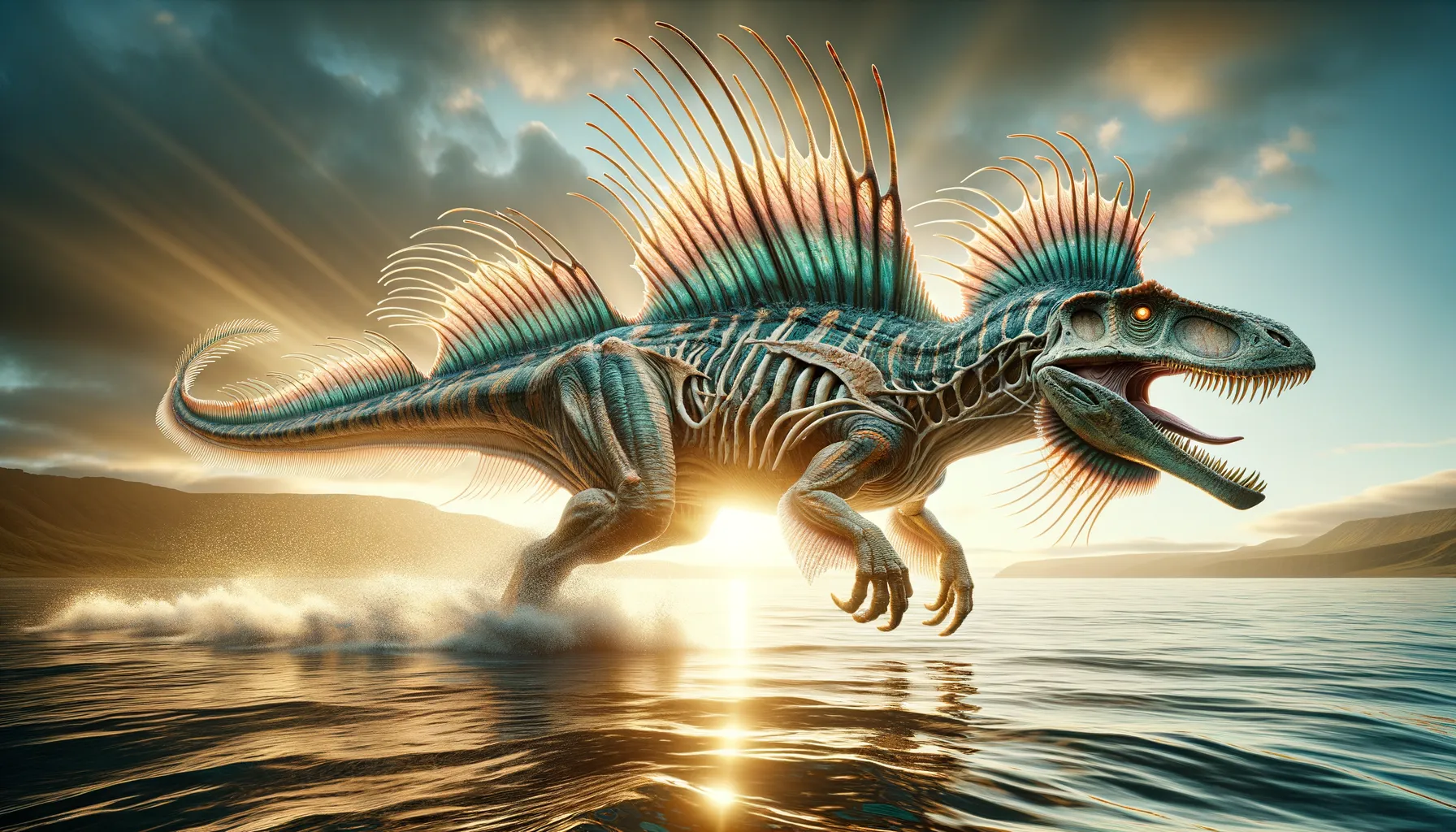
Ichthyovenator
The Sail-backed Fish Hunter of Laos
Period
Cretaceous
Length
Approximately 8-9 meters in length.
Height
Estimated to be around 3-4 meters tall.
Weight
Estimated to weigh around 2,000 kg (4,400 lbs).
Ichthyovenator, meaning 'fish hunter', was a spinosaurid dinosaur that roamed the Earth during the Cretaceous period. Known for its unique sail and piscivorous diet, this dinosaur provides insight into the diverse adaptations of theropod dinosaurs. It possessed distinctive vertebrae that supported its sail-like structure and lived in what is now Southeast Asia, indicating a preference for aquatic or semi-aquatic habitats.
Diet
Ichthyovenator primarily fed on fish, leveraging its conical teeth and elongated snout to capture slippery prey. It likely supplemented its diet with small terrestrial animals when necessary.
Hunting
It employed a combination of stealth and quick reflexes to ambush fish in rivers or lakes. Its crocodile-like snout was perfect for plucking fish out of the water with minimal splash or noise.
Environmental challenges
Ichthyovenator faced challenges such as competition for food resources with other large predators. Seasonal changes may have influenced fish availability, requiring adaptations in hunting strategies. Periods of drought or alteration in water bodies could present difficulties in finding consistent food sources. The need to avoid larger predators or rivals could influence its choice of territory.
Speed
Moderate and suited for chasing prey within aquatic environments.
Lifespan
Estimated to be around 20-30 years, similar to other theropods.
First discovery
Discovered in 2010 in Laos by paleontologist Ronan Allain.
Fun Facts
- Ichthyovenator, meaning 'fish hunter,' was a spinosaurid dinosaur known for its diet that probably included fish.
- This dinosaur was discovered in what is now Laos, in Southeast Asia, and lived during the Early Cretaceous period.
- Ichthyovenator is notable for its unusual spine with a sail-like structure, which might have been used for display or temperature regulation.
- The first fossils of Ichthyovenator were discovered in 2010, making it a relatively recent addition to the knowledge of dinosaur species.
- Ichthyovenator's partial skeleton suggests it was a medium-sized dinosaur, possibly reaching lengths of around 8-9 meters (26-30 feet).
- The discovery of Ichthyovenator adds to the diversity of the spinosaur family, which includes other fish-eating dinosaurs like Spinosaurus.
- Ichthyovenator's name reflects both its diet and hunting strategy, as 'Ichthyo' refers to fish in Greek, while 'venator' means hunter in Latin.
Growth and Development
Like most theropods, Ichthyovenator grew rapidly during its juvenile years to avoid predation. As it reached adulthood, growth would slow, and it would focus on sustaining its large body size. The formation of its unique sail likely developed as it matured and might have played a role in temperature regulation or mating displays.
Habitat
Ichthyovenator thrived in semi-aquatic environments, often near rivers or lakes that provided access to its primary food source, fish. Its habitat was likely lush with vegetation, supporting a diverse ecosystem of both aquatic and terrestrial life forms. The presence of water bodies played a crucial role in its survival, offering avenues for hunting and potentially avoiding larger terrestrial predators.
Interaction with other species
Ichthyovenator shared its environment with various other dinosaurs, including herbivores and other carnivores. It interacted competitively with contemporaneous spinosaurids over food and territory. Its social interaction with other species might have been limited due to its piscivorous specialization but could include avoiding larger predators.
Natural lifespan
In natural conditions, Ichthyovenator could live for about 20 to 30 years.
Reproduction
Like most theropods, Ichthyovenator is thought to have laid eggs in nests it built. The nurturing of its young is uncertain, but some degree of parental care might have been present, as seen in other theropods. Reproduction likely involved complex mating displays, potentially utilizing its sail to attract mates.
Social behaviour
Ichthyovenator's social structure is not well-documented but could have involved a solitary lifestyle due to its specialized diet. It may have had interactions during mating seasons or in nurturing offspring. Territorial behaviors likely existed, especially in prime fishing locations, to ensure access to food resources.
Fossil locations
Fossil evidence of Ichthyovenator has been primarily discovered in Laos. The remains were uncovered in the Gressly-type sandstones, which suggest a previous fluvial environment. This limited discovery suggests that its range might have been more extensive but is not yet fully excavated.
